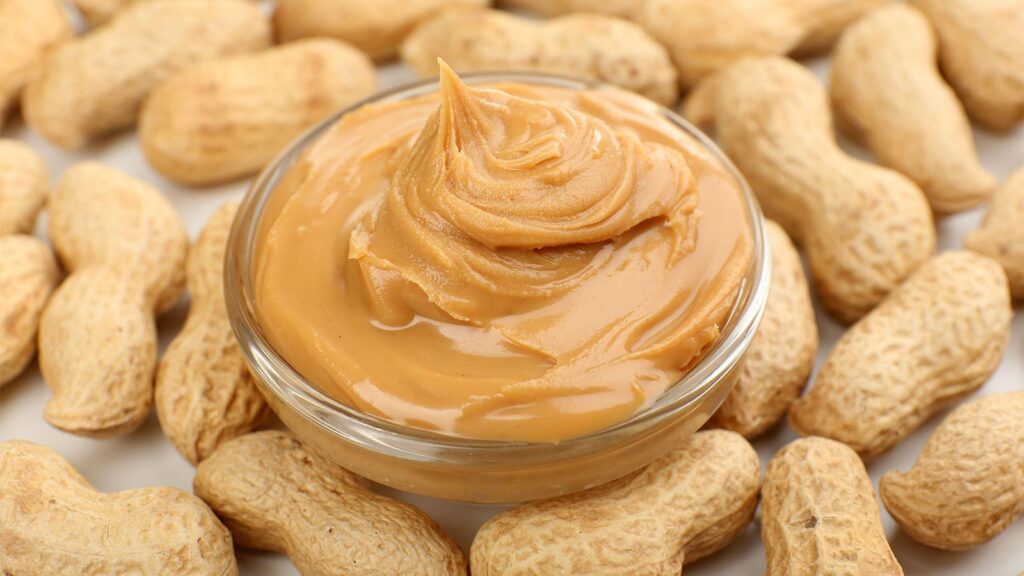- Daily peanut oral immunotherapy enabled children with high-threshold peanut allergies to achieve full tolerance.
- Of the treated children, 68.4% tolerated a meal-size dose of peanut protein versus 8.6% of those who continued to avoid peanut.
- Daily peanut oral immunotherapy was safe, effective, and inexpensive with use of store-bought peanut products.
Daily peanut oral immunotherapy (P-OIT) using peanut butter and other store-bought, home-measured products helped most children who could already tolerate a small amount to become fully peanut tolerant, a randomized trial showed, expanding the population who may benefit from this approach.
After following the protocol to gradually increase exposure from the initial tolerance of at least half a peanut to a tablespoon a day, all participants successfully passed a challenge with an amount of peanut two dose levels above their baseline or 9 g of peanut protein (equivalent to about 3 tablespoons of peanut butter), reported Scott H. Sicherer, MD, of the Icahn School of Medicine at Mount Sinai in New York City, and colleagues in NEJM Evidence.
By comparison, 21% of the children randomized to continue to avoid peanut consumption were able to pass the same challenge (between-group difference 79.0 percentage points, P<0.001), although only 10% (three of 30) did so by being able to consume the full 9-g amount.
Those able to tolerate the maximum amount then went off the protocol with the suggestion to continue to consume peanut daily for 16 weeks followed by 8 weeks of peanut avoidance and rechallenge. At that point, 68.4% of the P-OIT group versus 8.6% of the peanut avoiders could tolerate 9 g of peanut protein without reaction and were considered to have developed tolerance to peanuts (between-group difference 59.9 percentage points, 95% CI 42.4-77.3).
P-OIT appeared safe, with no dosing reactions worse than grade 1 severity or any serious adverse events reported.
“Our study results suggest a safe, inexpensive, and effective pathway for allergists to treat children with peanut allergy who can already tolerate the equivalent of at least half a peanut, considered a high-threshold peanut allergy,” said Sicherer in a statement. “Our findings open the gateway to personalized threshold-based treatments of food allergy and will encourage additional studies that delve deeper into peanut and other foods for this approach that might be a game-changer for the majority of people with food allergies.”
Previous trials have established the safety of pharmaceutical-grade P-OIT but focused on the highest risk scenario of low-tolerance peanut allergy, in which an allergic reaction is triggered by 100 mg of peanut protein, equivalent to less than half a peanut.
However, about half of peanut-allergic children — an estimated 800,000 in the U.S. — have high-threshold peanut allergy, which hadn’t previously been studied for P-OIT.
“Children with high-threshold peanut allergy couldn’t participate in previous food allergy treatment trials, leaving them without opportunities to explore treatment options,” said Jeanne Marrazzo, MD, MPH, director of the National Institute of Allergy and Infectious Diseases, which sponsored the trial. The trial “shows that a very safe and accessible form of therapy could be liberating for many of these children and their families,” she added in a statement.
The research group had previously shown that people with milk and egg allergies could tolerate these foods in baked goods, “which changed the global approach to these allergies,” said co-author Julie Wang, MD, also of the Icahn School of Medicine, in a statement. “The research team recognized that more than half of people with peanut allergy can tolerate half a peanut or more, and thought that this group of people might be treatable if we took a different approach to peanut oral immunotherapy. We were thrilled to find that this treatment strategy was even more successful than we had anticipated.”
The phase II, single-center CAFETERIA trial included 73 children ages 4 to 14 years — ages for which “spontaneous resolution is unlikely and retention in a prolonged trial would be high,” the researchers noted — who strictly avoided peanut consumption before enrollment and had a history of sensitization (peanut serum IgE >0.35 kUA/l). During screening with a double-blind food challenge, they had to be able to tolerate only in the range of 143 mg to 5,043 mg of peanut protein before dose-limiting reaction symptoms.
Participants were randomized open-label to treatment with P-OIT using store-purchased, home-measured peanut under medical supervision versus avoidance of peanut as the control. Every 8 weeks, P-OIT patients returned for an in-office trial of the next higher dose. Upon reaching a 1-tablespoon dose or after 72 weeks, a repeat double-blind food challenge was done for the primary endpoint, which 32 of the 38 participants in the P-OIT group (84.2%) and 30 of 35 in the avoidance group (85.7%) were eligible for and underwent.
Those who tolerated the full challenge amount then added peanut to their diet (equivalent to 2 tablespoons of peanut butter per week) for 16 weeks and then avoided peanut entirely for 8 weeks, followed by a food challenge to assess sustained unresponsiveness. The four children who failed that test had only grade 1 symptoms that were treated with antihistamines, the researchers noted.
“These study results are very exciting and a huge step forward in personalizing food allergy treatment,” concluded Sicherer. “My hope is that this study will eventually change practice to help these children and encourage additional research that includes this approach for more foods.”
Disclosures
The study was supported by a grant from the National Institute of Allergy and Infectious Diseases with additional support from the Icahn School of Medicine at Mount Sinai and the National Center for Advancing Translational Sciences.
Sicherer disclosed relationships with Food Allergy Research and Education, the International FPIES (Food Protein-Induced Enterocolitis Syndrome) Association, the NIH, Pfizer, UpToDate, and the American Academy of Allergy, Asthma, and Immunology.
Primary Source
NEJM Evidence
Source Reference: Sicherer SH, et al “Peanut oral immunotherapy in children with high-threshold peanut allergy” NEJM Evid 2025; DOI: 10.1056/EVIDoa2400306.
Please enable JavaScript to view the

